
3 ways to turn your good performers into high performers
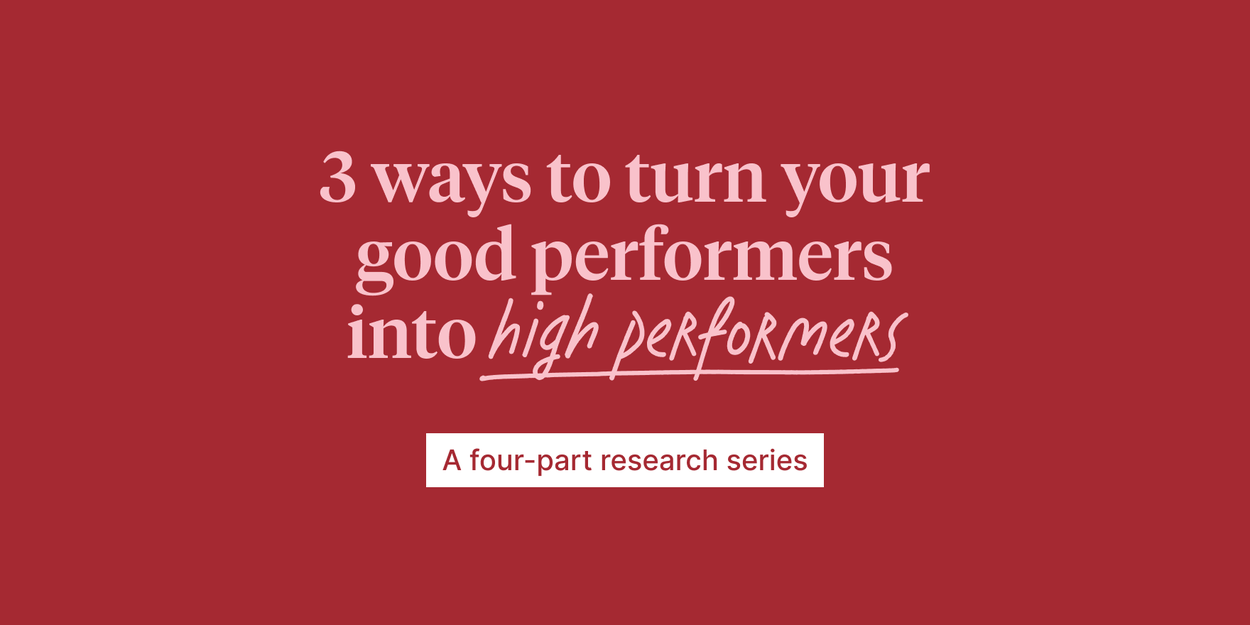
Written by

Senior Content Marketing Manager, Culture Amp

Director of People Science Research, Culture Amp
Every organization wants to increase the proportion of high performers in their workforce – but this is easier said than done. After all, there’s no sure-fire, prescribed method for creating a high performer.
All employees have the potential to improve their performance with the right support, just as every employee’s performance can also wane without it. While you can’t control every factor (e.g., an employee’s personal situation), there are areas of the organization you can influence to help your employees perform at a higher level.
The most obvious group of employees to focus on is your good performers, who already often exceed expectations and may only need a small push to become truly exceptional. In this final part of Culture Amp’s research series, our people scientists share three ways to help turn your already-good performers into high performers.
Our methodology
In our research, we standardized the rating scales of 741 companies and over 200,000 employees into four categories:
- Sets a New Standard (High performers) - These are truly high-performing employees (ranges from 0-20%, median is 8%)
- Often Exceeds Expectations (Good performers) - These employees perform very well, often above expectations (median 34%)
- Consistently Meets Expectations (Solid performers)- These are solid-performing employees, and the plurality falls into this bucket (median 44%)
- Needs Development (Under performers) - These low-performing employees are typically a small proportion of the workforce (ranges from 0-20% of company, median is 4%)
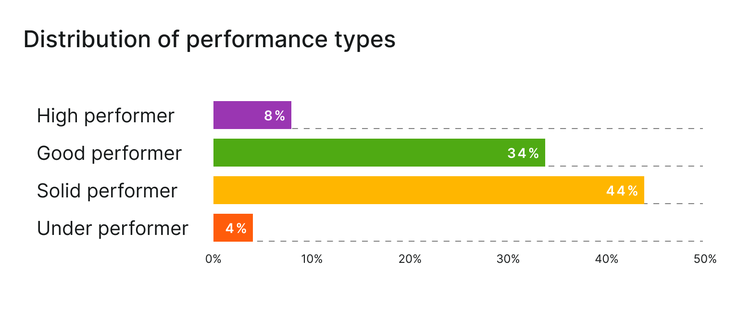
We looked at the engagement survey results of employees rated “good performers” to see how their experience differed most from “high performers.” We also followed these employees over time to see what preceded an improvement in their rating.
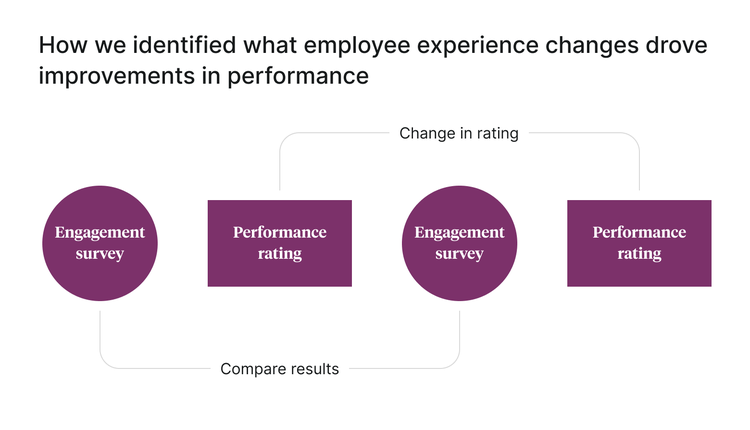
By analyzing these employees' engagement scores, we identified three potential reasons these “good performers” were able to become “high performers.” We look at changes in employee engagement surveys because improvements in certain areas can imply that those particular areas (e.g., leadership, wellbeing, etc.) are where leaders should focus to increase the number of high-performing employees at their company.
To learn more about our methodology, read the first part of the series, “Exploring the relationship between engagement and performance.”
Three ways to help your good performers become high performers
According to our research, there are three key ways you can help your good performers reach high performance:
- Make expectations clear
- Provide development opportunities to the employees most likely to benefit from them
- Nip preferential treatment from managers in the bud
Below, we’ll go into each of these in more detail, and share tips on how you can take action.
1. Make expectations clear
When we looked at what employee experience changes preceded a rating change, we found the most predictive question was, “I know what I need to do to be successful in my role.” Employees who responded more positively to this statement were more likely to receive a higher performance rating during the next review period.
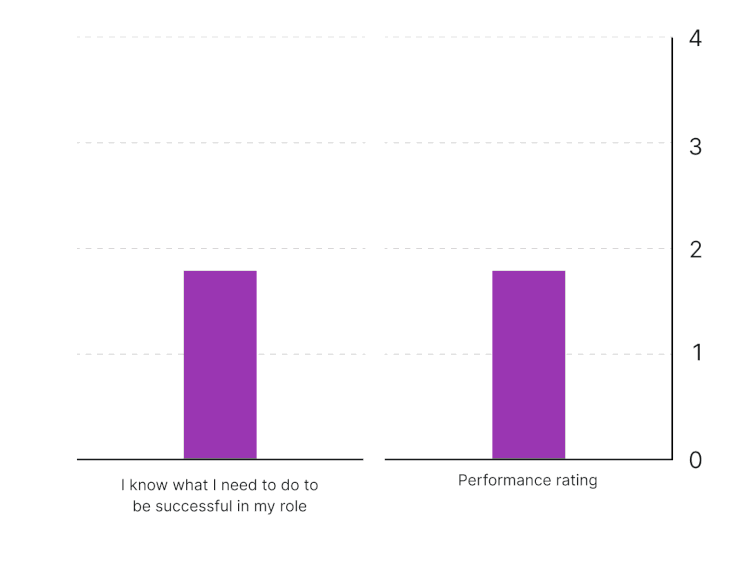
Intuitively this makes sense. If an employee is unclear about what success looks like for their role, what they need to do to be successful, and how they will be evaluated, then they won’t be able to deliver on what’s expected of them. It’s important to note that this relationship goes both ways. If an employee’s favorability towards this statement declined between surveys, that employee’s ratings were also more likely to decline in the next review period.
How to take action: Ensure every role has a clear job description that accurately reflects the day-to-day tasks. Roles can shift as new specialized roles are added, and these changes may not be communicated to employees – especially if you are a company that is growing quickly. Additionally, monitor question(s) around clear role expectations in your employee survey results, particularly for roles where changes have occurred. That way, you can intervene before this confusion leads to lower performance.
2. Provide development opportunities to the employees most likely to benefit from them
When comparing the employee experience before and after performance ratings, we found that high performers have much larger improvements in how they respond to development questions than good performers. After being rated, high performers are more likely to feel like the company is contributing to their development, offering them opportunities to develop skills, and that their manager is interested in their career aspirations.
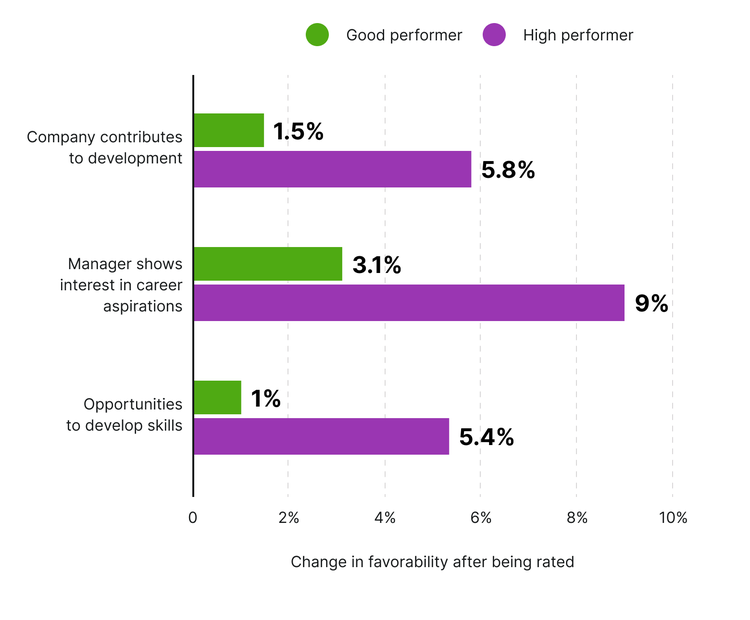
What explains the discrepancy between how high performers and good performers perceive employee development after being rated? Many organizations likely want to reward high performance with additional development opportunities, and there is no problem in doing so. That being said, it’s crucial that you don’t overlook your other employees in the process. One of the ultimate goals of employee development is to help employees boost their performance – not just reward it – but the data indicates that many organizations overlook the employees who would most benefit from it.
This follows the “Pygmalion effect,” which is a bias in which performance expectations affect how others interact with a person and ultimately change that person’s future performance. Giving high performers more or better development opportunities than good performers makes it more difficult for employees rated as “good performers” to improve their performance and make the leap to high performers.
How to take action: If you want to take a scaleable and impactful approach to increasing the proportion of high performers at your company, you should focus on counteracting the “Pygmalion effect” and ensure that equal growth opportunities are available to your good performers.
There are different types of development, and our people scientists recommend that for good performers, you talk to them about their performance gaps and focus development on identifying the in-role skills they will need to take their performance from good to exceptional. For high performers, you should discuss where they see their career going next and focus on the skills they will need for their next career move.
3. Nip preferential treatment from managers in the bud
In the last blog, we shared that one reason employees underperform (i.e., fall into the lowest performance bucket) is that they don’t feel supported by their managers. Additionally, when we looked at where the employee experience most differed between “good performers” and “high performers,” the experience with their manager was consistently at the top of the list. And again, we saw the same trend – after an employee was rated as a high performer, they felt more positively about their manager experience than good performers.
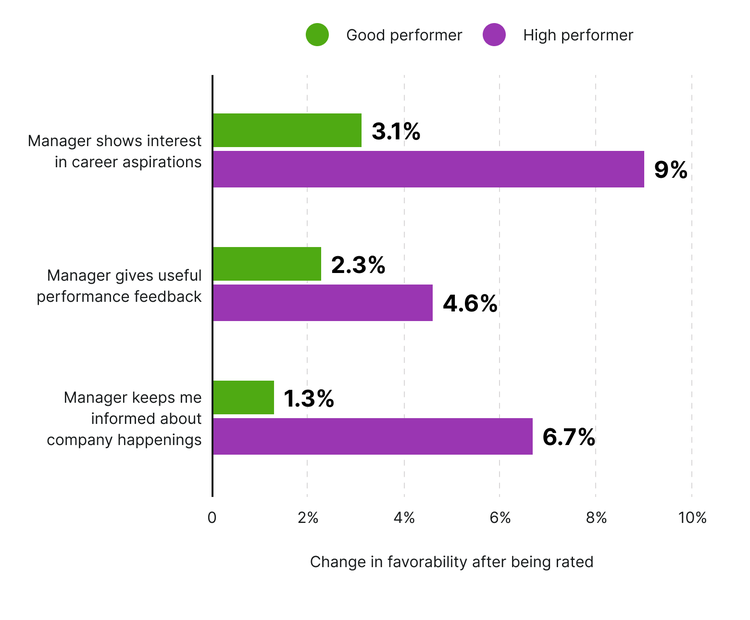
This, again, follows the “Pygmalion effect.” In this way, being rated a high performer becomes a self-fulfilling prophecy. High-performing employees become the apple of their managers’ eyes. In contrast, employees who weren’t rated as “high performers” are not given the resources and manager support that would ultimately help them become high performers.
How to take action: Many have heard of the “growth mindset,” but not everyone realizes that organizations can also have a growth mindset. Share with managers your own data on how often employees move from one rating to the other to demonstrate that performance is not static and someone’s performance rating is not their destiny. Emphasize the need to support their good performers as diligently as their high performers. In particular, have them focus their 1-on-1 discussions around the following questions:
- What challenges or roadblocks are you facing that I can help you overcome?
- How can I help you make a clear plan for achieving your goals?
- What would you like feedback on to improve?
Create more high performers in your organization
The simplest way to increase the proportion of high performers in your organization is to provide your good performers with the resources they need to succeed. At the most basic level, that means ensuring they know what success looks like in their role and how to achieve it.
It’s also important to ensure that your performance ratings don’t become a self-fulfilling prophecy. Support your good performers to become high performers by treating them as such and providing them with the same level of learning and development opportunities. This requires your organization to adopt a growth mindset and recognize that anyone can improve their performance.
This wraps up our research series exploring the relationship between employee engagement and performance! If you want to learn more, read the rest of the series:
- Context: Exploring the relationship between engagement & performance
- Top 3 ways to engage and retain high-performing employees
- 3 reasons why your employees may be underperforming

Make development a continuous process
Motivate, engage, and retain every employee in your company with science-backed solution for personalized, continuous growth.
To ensure you don’t miss out on any of Culture Amp’s future research, subscribe to the People Geekly newsletter! We’ll send you the latest HR insights, news, and events – straight to your inbox.



